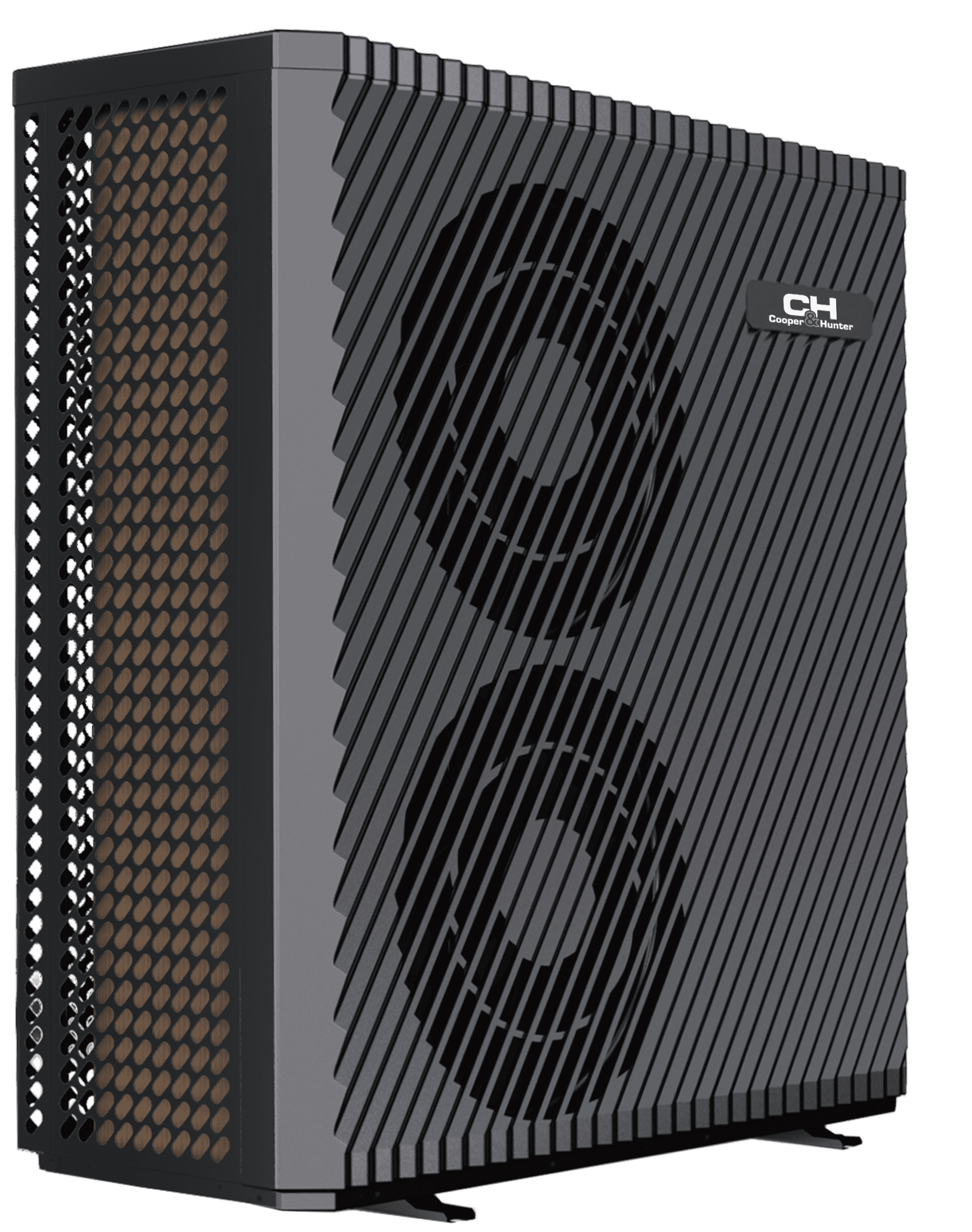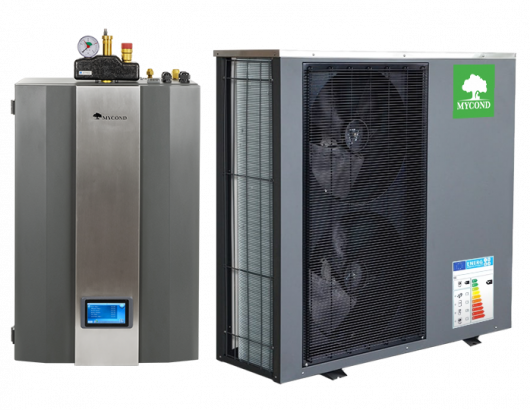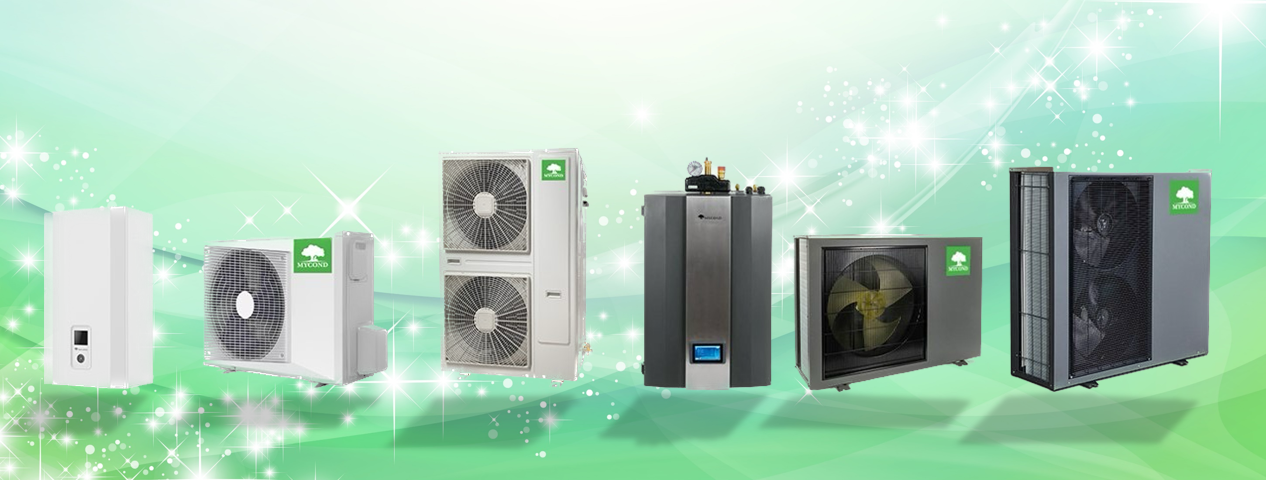Air-to-water heat pumps come in two main types: monobloc and split systems. Here are their main features and differences:
A monoblock heat pump is a single outdoor unit that houses all the main components: compressor, condenser, expansion valve and evaporator.

Modern monoblocks use the more environmentally friendly refrigerant R290, which allows the heating medium (usually an antifreeze solution) to be heated to about +75°C. It is sufficient for efficient home heating and hot water supply.
Advantages of a monoblock:
- Simplified installation of the outdoor unit only;
- Shorter refrigerant lines; - Possibility to achieve higher coolant temperatures;
Disadvantages of monobloc:
- Large outdoor unit (typical dimensions 1-1.5m high and 1-1.2m wide/depth) requiring clearance, foundation may be required;
- Difficulty in maintenance, as all components are in the same enclosure, requiring the removal of numerous panels for access.
Advantages of a split system:
Split systems consist of two units.

The outdoor unit contains a compressor and condenser, while the indoor hydronic module contains an expansion valve and a plate heat exchanger that heats the heat transfer fluid that circulates through pipes between the units.
- More compact design;- The indoor unit can be placed inside the house;
- Separate components make maintenance easier.
Disadvantages of a split system:
- More complex installation, requiring insulated refrigerant lines between units, sometimes requiring wall tapping;
- Maximum heat transfer temperature is usually limited to +60°C, potentially insufficient for good heating and hot water during cold periods;
- Need for a condensate drainage system from the indoor unit, pipework either to a drain or to the street;
- Efficiency losses with long refrigerant pipework over 15 metres.
- The internal hydraulic module takes up useful space and makes noise during operation.
So, a monoblock is easier to install and can reach higher temperatures, but it is bulkier. A split system is more compact but has limitations on installation, maximum temperature, needs condensate drainage and is limited by pipe length.

The choice depends on the specific site conditions and the owner's preferences.


